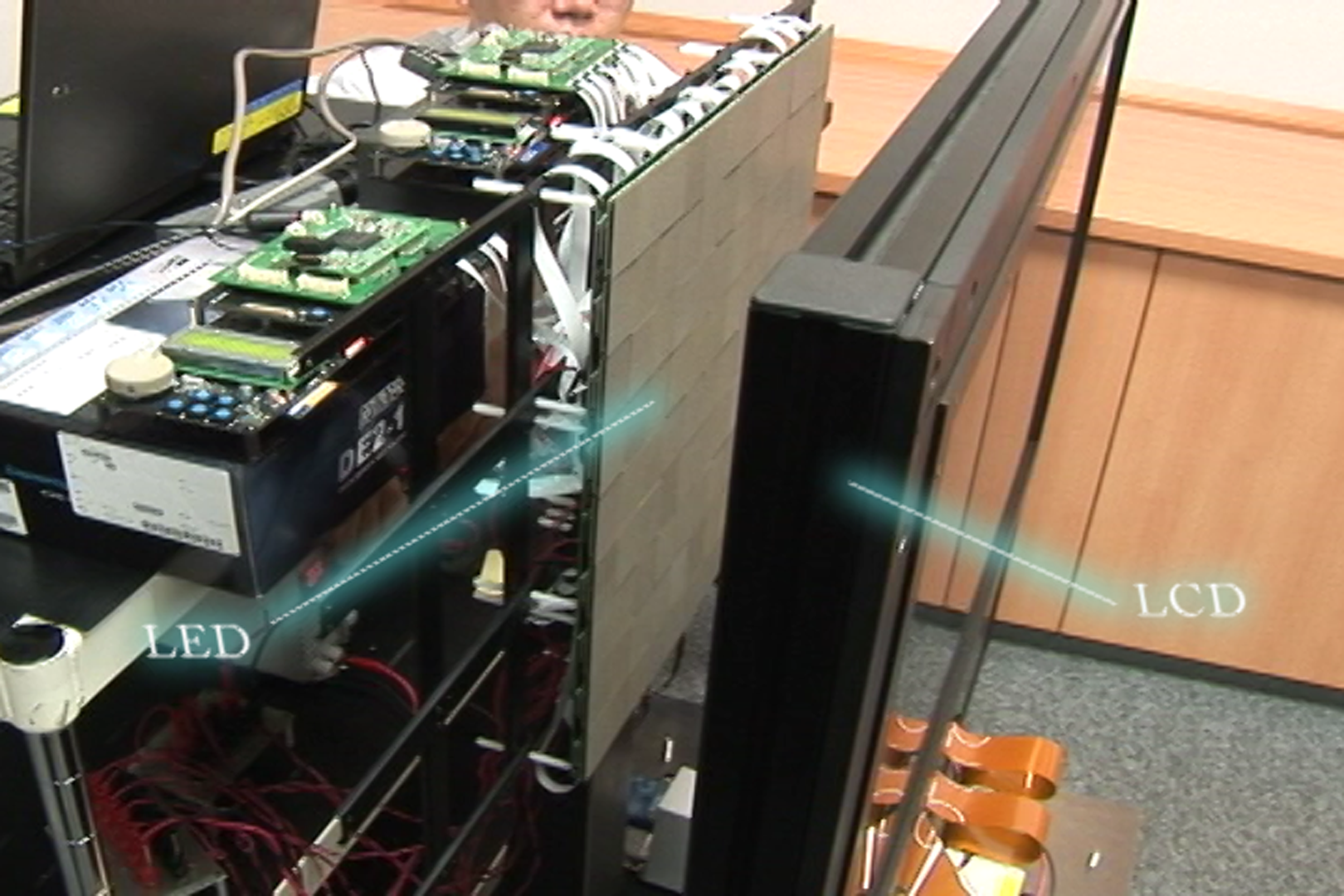“Adaptive Parallax Autostereoscopic LED Display”
Conference:
Experience Type(s):
Title:
- Adaptive Parallax Autostereoscopic LED Display
Organizer(s)/Presenter(s):
Description:
Autostereoscopic 3D displays using static parallax barrier or lenticular lens are commercially available in these days. In these methods, however, the number of viewpoints is fixed at the time of manufacturing. Active parallax barrier [Perlin, 2000] and dynamic parallax barrier [Peterka, 2008] have been proposed to improve the resolution and number of viewpoints by moving the position of the parallax barriers. To implement an autostereoscopic display, with dynamic parallax barriers, dual-layered LCD panel is a common approach as is mentioned by [Hirsch, 2010]. And a method of optimizing the parallax barriers [Lanman, 2010] has been proposed to represent more perceptually-acceptable imagery. Remaining limitations of the dual-layered LCD method are the refresh rate and brightness of the LCD panel. Commonly used high-speed LCD has 120Hz in refresh rate and around 500cd/m2 in brightness so that conventional systems did not have enough quality to be used in public. To solve this problem, we propose an adaptive parallax autostereoscopic display composed of a high-density/high-frequency LED panel and a high-speed/high-contrast LCD panel.
References:
[1]
Perlin, K., Paxia, S. and Kollin, J. 2000. An Autostereoscopic Display. In Proc. of ACM SIGGRAPH 2000, pp. 319–326.
[2]
Peterka, T., Kooima, R. L., Sandin, D. J., Johnson, A., Leigh, J., DeFanti, T. A., 2008. IEEE Trans. on Visualization and Computer Graphics, Vol. 14, No. 3, pp. 487–499.
[3]
Hirsch, M. and Lanman, D., 2010. Build your own 3D display, In Proc. of ACM SIGGRAPH ASIA 2010 Courses, Article 16.
[4]
Lanman, D., Hirsch, M., Kim, Y., and Raskar, R., 2010. Content-Adaptive Parallax Barriers: Optimizing Dual-Layer 3D Displays using Low-Rank Light Field Factorization, ACM Transactions on Graphics, Vol. 29, Issue 6, Article 163.





